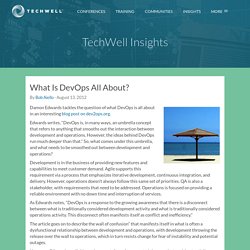

Project Management Book Club. The Project Management Book Club has a steady stream of online studies with the industry's top authors and experts on project management.

To receive a notification when a new book study is released, join Project Management Book Club today! Wondering what it takes to make a successful project? Gazza's Guide to Practical Project Management illustrates the critical importance of soft skills on every project - after all, the best metrics and toolkits on the market will not help you succeed unless you work with your team and the customer to deliver a successful project. Agile Estimation, Prediction, and Commitment. Your boss wants a commitment.

You want to offer a prediction. Agile, you say, only allows you to estimate and predict – not to commit. “Horse-hockey!” Your boss exclaims, “I want one throat to choke, and it will be yours if you don’t make a commitment and meet it.” There’s a way to keep yourself off the corporate gallows – estimate, predict, and commit – using agile principles. This is an article about agile product management and release planning. In the dark ages before your team became agile, you would make estimates and commitments. It makes sense. Your early estimates are wrong. Agile processes are designed to help you deliver what your customer actually needs, not what was originally asked for. In the old world, you would commit to delivering a couple pyramids. Your team changed to agile, so that you could deliver the sphinx. Article info : What Is DevOps All About? Damon Edwards tackles the question of what DevOps is all about in an interesting blog post on dev2ops.org.

Edwards writes, “DevOps is, in many ways, an umbrella concept that refers to anything that smooths out the interaction between development and operations. However, the ideas behind DevOps run much deeper than that.” So, what comes under this umbrella, and what needs to be smoothed out between development and operations? Development is in the business of providing new features and capabilities to meet customer demand. Agile supports this requirement via a process that emphasizes iterative development, continuous integration, and delivery. As Edwards notes, “DevOps is a response to the growing awareness that there is a disconnect between what is traditionally considered development activity and what is traditionally considered operations activity. However, QA needs a reliable environment, free of unexpected changes that could potentially impact the validity of the testing effort. What is DevOps? - Blog - dev2ops - Solving Large Scale Web Operations and DevOps Problems.
Update 1: Wikipedia now has a pretty good DevOps page Update 2: Follow-up posts on the business problems that DevOps solves and the competitive business advantage that DevOps can provide.

If you are interested in IT management — and web operations in particular — you might have recently heard the term “DevOps” being tossed around. The #DevOps tag pops up regularly on Twitter. DevOps meetups and DevOpsDays conferences, are gaining steam. DevOps is, in many ways, an umbrella concept that refers to anything that smoothes out the interaction between development and operations. What is DevOps all about? DevOps is a response to the growing awareness that there is a disconnect between what is traditionally considered development activity and what is traditionally considered operations activity. As Lee Thompson and Andrew Shafer like to put it, there is a “Wall of Confusion” between development and operations.
Operations folks tend to come from a mindset where change is the enemy. 4 Metrics to Help Spot Trouble for Agile Teams. In coaching several agile teams and sifting through long lists of metrics, I've observed a core set of metrics that can help distinguish successful teams from teams headed for schedule slips: Juggle Many teams have multiple team members who split time between projects.

In most cases, it is better to have fewer people full time on a project than more people part time. For example, instead of having eight people working part time, try having four people work full time. Why? This is the ratio of work planned compared to potential capacity. Fill your plan until you have 70 to 80 percent of the team's time accounted for. In addition, have the team own its total task hours and let them "pull" work when they are ready.
Execution leak Compare the number of task hours left at the end of the iteration to the total planned. Jelly This shows how much unplanned work was added during the iteration. 7 Project Management Trends to Watch. Each year, there are new trends in project management.

I wanted to weigh in with a few of my thoughts on what they might be this decade. 1. Beyond the triple constraint Organizations have been looking to have a good mix of project, program and portfolio managers. Organizations should re-design and build project management systems thinking beyond the triple constraint. The combined power of project portfolio, program and project management enables delivering business results not limited to the triple constraint.For example, if a project was delivered on time, within budget and with required quality, but the project outcome doesn't provide expected value, then in my opinion, the project should not be considered successful.
As such, it behooves project managers to expand his or her career growth to acquire new skills and experience in the areas of program management and portfolio management. Www.anchor.ch/Loch_Managing_Proj_Uncertainty_L_7.PDF. Guerrilla Project Management.